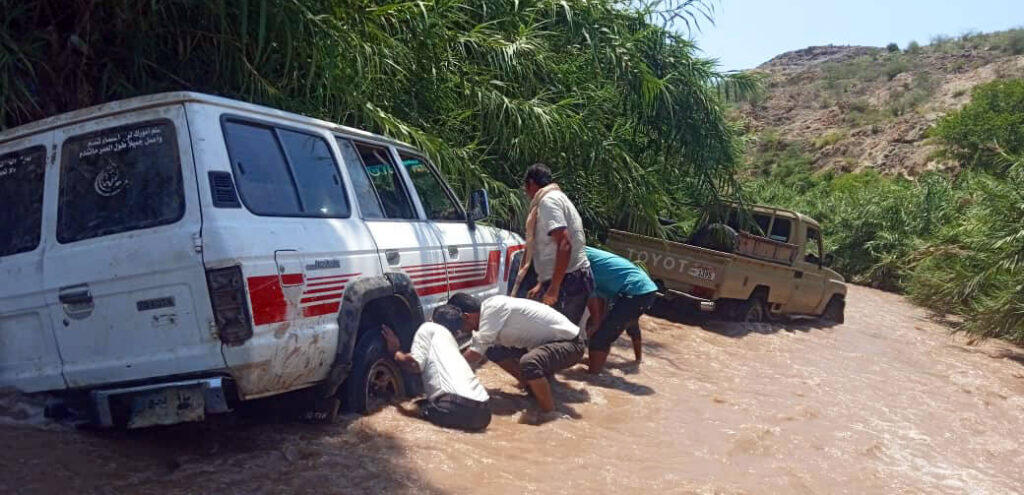“The rains were relentless. Severe flooding turned the roads into barriers, making it nearly impossible to reach those in need,” says Dr. Mahmoud Hussien Mohammed Abdullah.
The local doctor is describing the vicious floods that swept through Yemen in September 2024. A result of an unusually heavy rainy season that lasted from July until the end of September, the floods affected more than 650,000 Yemenis in 20 of the country’s 22 governorates.
This natural disaster was the latest addition to the multifaceted humanitarian crisis faced by Yemenis. Hunger, displacement and disease are rampant throughout the country. Nearly half of the population is experiencing severe food insecurity, and an estimated 19.5 million people will require humanitarian assistance in 2025. The flooding has worsened the situation, destroying homes, livelihoods and infrastructure while increasing the threats of water-borne diseases such as cholera.
Local physician Dr. Abdullah leads a brand-new community response team (CRT) in Al Azariq District, Al Dhale’e governorate—a rural region where many people lack access to basic services such as healthcare and safe drinking water. The team, made up of local health workers nominated by the governorate health office, is trained, supplied and supported by International Medical Corps.
When September’s flooding devastated the already isolated and underserved communities of Al Azariq District, the General Director of the district appealed to the CRT for urgent humanitarian assistance. It was the newly formed team’s first major opportunity to put their training to the test.
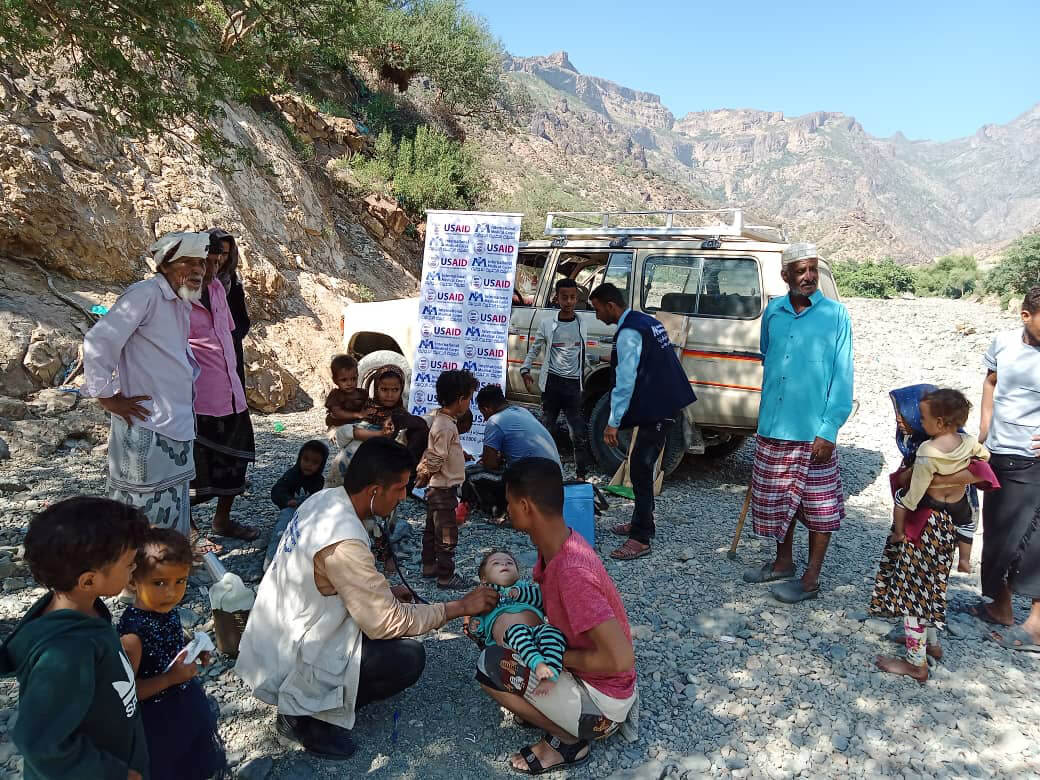
Providing Care in Challenging Circumstances
Between September 16 and October 30, the CRT travelled around the district to the worst-affected villages. The group of doctors, medical assistants, nurses and midwives delivered first aid, treated flood-related injuries, screened and treated children suffering from malnutrition and provided other essential health services to those most in need.
One of the hardest-hit areas was Bilad Al Ahmadi, a remote mountainous region with approximately 24,000 people spread across 39 villages. Already struggling to access basic services like healthcare and safe water, the flooding further cut off these communities from help, disrupting their agricultural livelihoods and bringing increased risks of malnutrition and diseases.
Getting to these remote villages was no easy task. The CRT’s van travelled over destroyed and flooded roads for many hours, returning daily to provide much-needed medical care. Because of the remoteness of these communities, simply providing care and then leaving wasn’t enough. To reduce the risk of childhood malnutrition in these food-insecure locations, the team also ran infant and young-child feeding workshops for mothers to help them maximise their children’s chances of staying healthy.
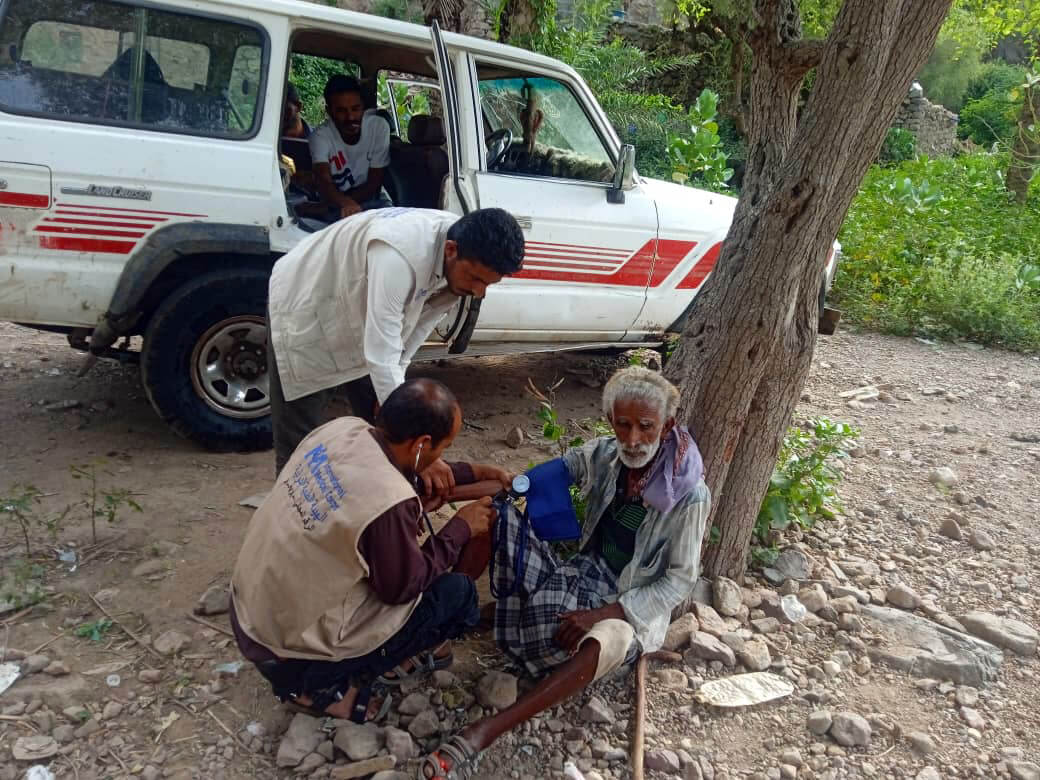
The CRT worked tirelessly to help as many people as possible. However, the ongoing flooding and damage to infrastructure brought significant challenges. On some occasions, roads were impossible to navigate, and their vehicles became stuck in the muddy waters.
“There were nights when we couldn’t return home, staying in remote villages because the roads were completely cut off,” says Dr. Abdullah. “But we refused to give up.”
One morning, the team had set off in their van to travel to a village called Torsa, located about four hours away from the district centre. However, the continued flooding, poor road conditions and rugged terrain made the journey arduous and nearly impossible. By the time the team arrived in Torsa, the sun was setting. Exhausted, there wasn’t much they could do in the dark except catch a few hours of sleep in the village and then resume providing medical services at dawn.
The work was gruelling, but the team’s efforts paid off. Throughout the exhausting six weeks of their response, the CRT was able to help 1,846 people—many of whom were young children, women and elderly people.
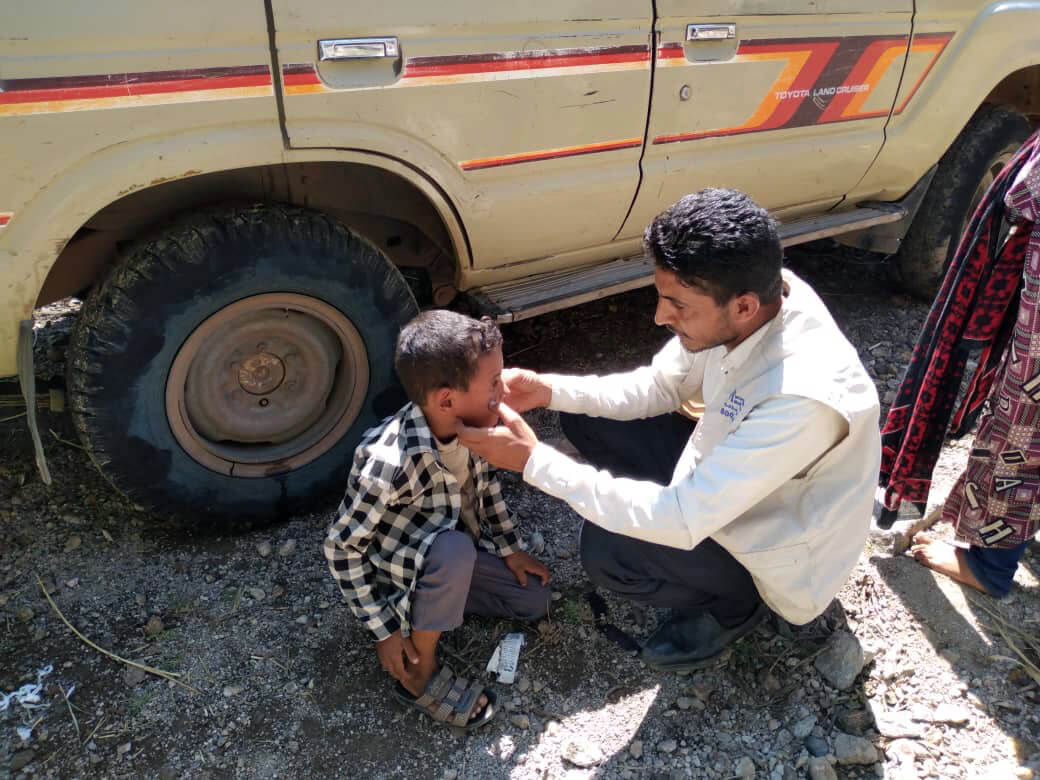
A Strategic and Sustainable Response
About half of Yemen’s healthcare facilities are no longer functioning, and those that remain are unable to meet the demands of a population suffering from widespread hunger and disease.
Since 2012, International Medical Corps has supported the country’s healthcare system by rehabilitating and providing resources for healthcare facilities. We also run nutrition and vaccination campaigns, carry out water, sanitation and hygiene projects, and provide protection and livelihood services for the most vulnerable communities.
Sustainability is always a priority for us. In addition to providing immediate aid for those who need it, we train and support local people, building their capacity to respond to future crises.
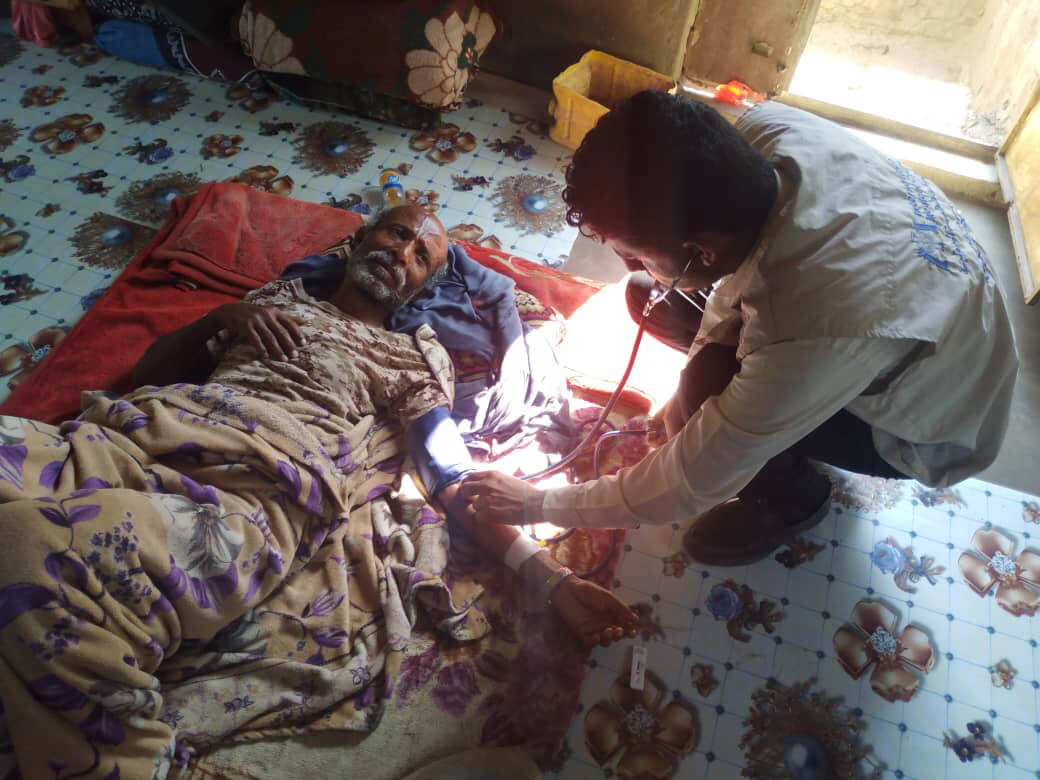
Establishing the CRT in Al Dhale’e governorate—through collaboration with the Ministry of Health and Al Dhale’e Health Office—was a key part of our mission to build local capacity to respond to crises. In addition to providing resources and logistical assistance to the team, we provided extra training for the local health workers in topics such as basic life support and advanced cardiac life support.
Building local resilience is essential as extreme weather continues to bring fierce cycles of flooding and droughts to Yemen. Now, with a CRT made up of three groups of highly trained local health workers (one primary response team and two on-call teams), the community of Al Azariq is better prepared to respond to crises in the future.
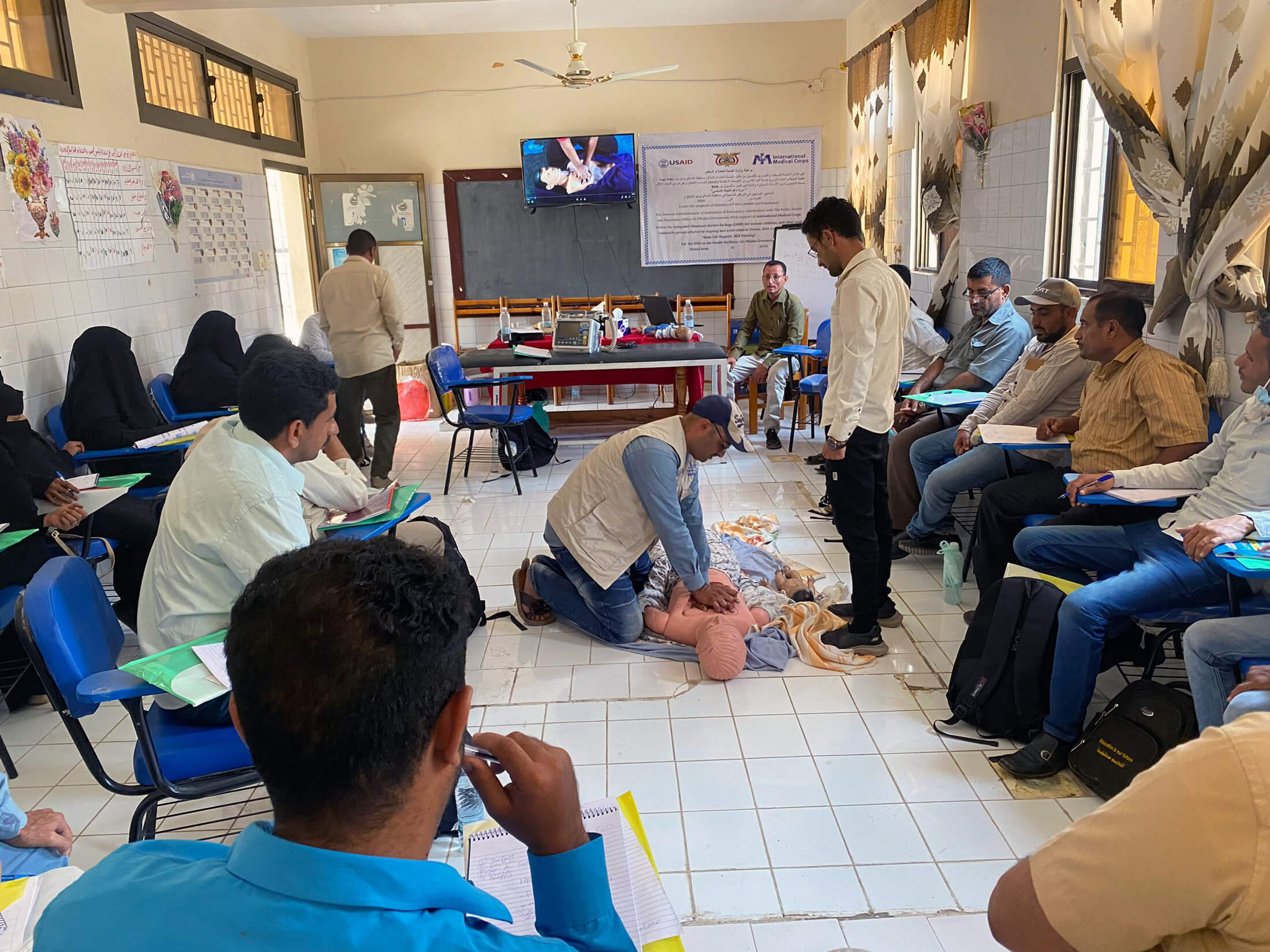
“The work International Medical Corps has done to bring emergency response and healthcare services to our people in remote villages devastated by the floods has been lifesaving,” says Ali Hadi Al-Hasani, Director General of Al Azariq District. “These efforts reached families who had nowhere else to turn.”
Meanwhile, the work is a continued source of pride for the local health workers involved in the CRT.
“Being part of the response team deployed to serve my community has been both an honour and a profound responsibility,” says Dr. Abdullah. “To the families we reached, we were more than healthcare providers—we were their last glimmer of hope in an overwhelming crisis. Their gratitude reminded us why we were there.
“None of this would have been possible without the unwavering support of International Medical Corps, which stood by us every step of the way,” he adds.
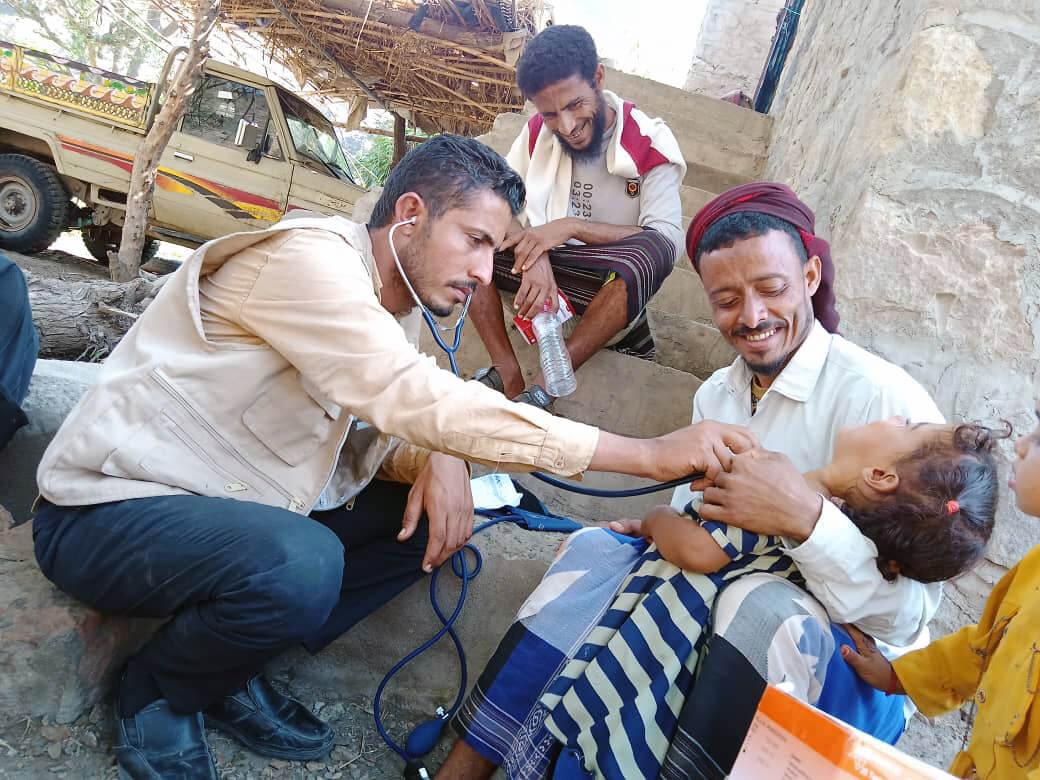
You can help continue providing essential humanitarian assistance around the world. Donate to International Medical Corps today.
